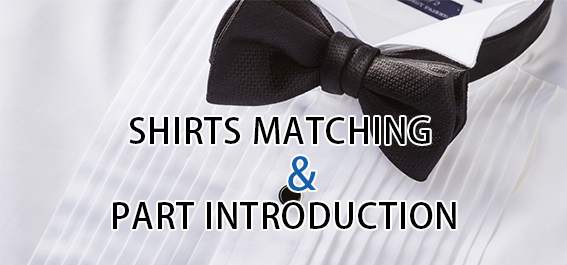How much do you know about shirts?

Shirts Matching
Casual shirts are used to match suit jackets. There are no rules for the use of fabrics. The styles are unchanged or slightly changed on the traditional basis. The color patterns are extremely free. Whether to wear a casual shirt with a suit or not with a tie depends on your preference and collocation effect. In addition, as a special rule, dark and slightly shiny casual shirt fabrics are loved by entertainers, and are often used by actors and designers in suits for formal dress. If this kind of dark shirt is well-tailored and matched with a suit, it can maintain the gentleman's style, but it also looks relaxed and handsome, and it has gradually become a tasteful young and upstart evening casual way.
As the name suggests, home shirts are worn at home and for walking, so the styles are mostly loose American styles, and stripes and lattices can be widely used. Although the fabric is mainly made of pure cotton, hemp and wool, the texture is mainly comfortable, but because of its home use, it does not pay too much attention to high-grade texture or special effects. Generally match sweaters and casual pants. Due to the extremely relaxed atmosphere of the school, home-style shirts are also the daily activities of many college students and professors. When paired with a velvet suit or other non-formal fabric suit, the suit is called a "suit jacket".
Most of the holiday shirts are made of thin pure linen cotton or silk fabrics. The style is completely free of binding, the cutting is more free, and the collar and cuffs do not use interlining. Affected by the culture of the colonial period and the trend of tropical vacations, holiday shirts are generally made of pure hemp, which can be used with holiday suits and trousers of the same texture, and knitted clothing.
Shirt Collar
The collar of Western shirts is exquisite and changeable. The collar type is distinguished according to the "Bazi" type before the lapel. There are small square collar, Chinese square collar, short pointed collar, middle pointed collar, long pointed collar and eight character collar. Its quality mainly depends on the material and processing technology of the collar lining. The materials used for collar lining are various specifications of cloth lining, film lining, adhesive lining and corner inserts. Among them, the flat composite collar with double-layer adhesive lining is the top grade, and the resin lining is added with the collar angle. Foil lining.
Body Cuffs
In addition to the collar style, the shirt has a straight waist, a curved waist, an inward placket, an outturn placket, a square hem, a round hem, and with or without pleats. There are long sleeves, short sleeves, single sleeves, double sleeves, etc.
Shirt Texture
Shirts can be divided into combed cotton shirts, silk shirts, double-crepe shirts, polyester-cotton shirts, etc. According to the bottom material, they are ideal for light, thin, soft, cool, stiff, and good breathability. Because hot melt adhesive materials are commonly used for shirt collar linings, avoid soaking in warm water above 60℃ during washing. The material of the shirt used to be white poplin, but now more shirts made of silk, yarn and various chemical fibers are used. There are stand-up collars, large lapels, and small lapels. Women's styles also have round necks or bald collars. Generally speaking, short sleeves are mostly bald collars and round necks, while long sleeves are mostly small lapels.
Fabric Pros & Cons
In addition to the advantages and disadvantages of raw materials, the yarn count is an important factor in determining the grade of the fabric. The yarn count is the thickness of the yarn. The higher the yarn count, the finer the yarn, and the more complicated the process, the more expensive it is. High-end shirts in the current century generally use 120-180 counts of fabrics, and even more high-end shirts have begun to use up to 200-300 counts of fabrics.
